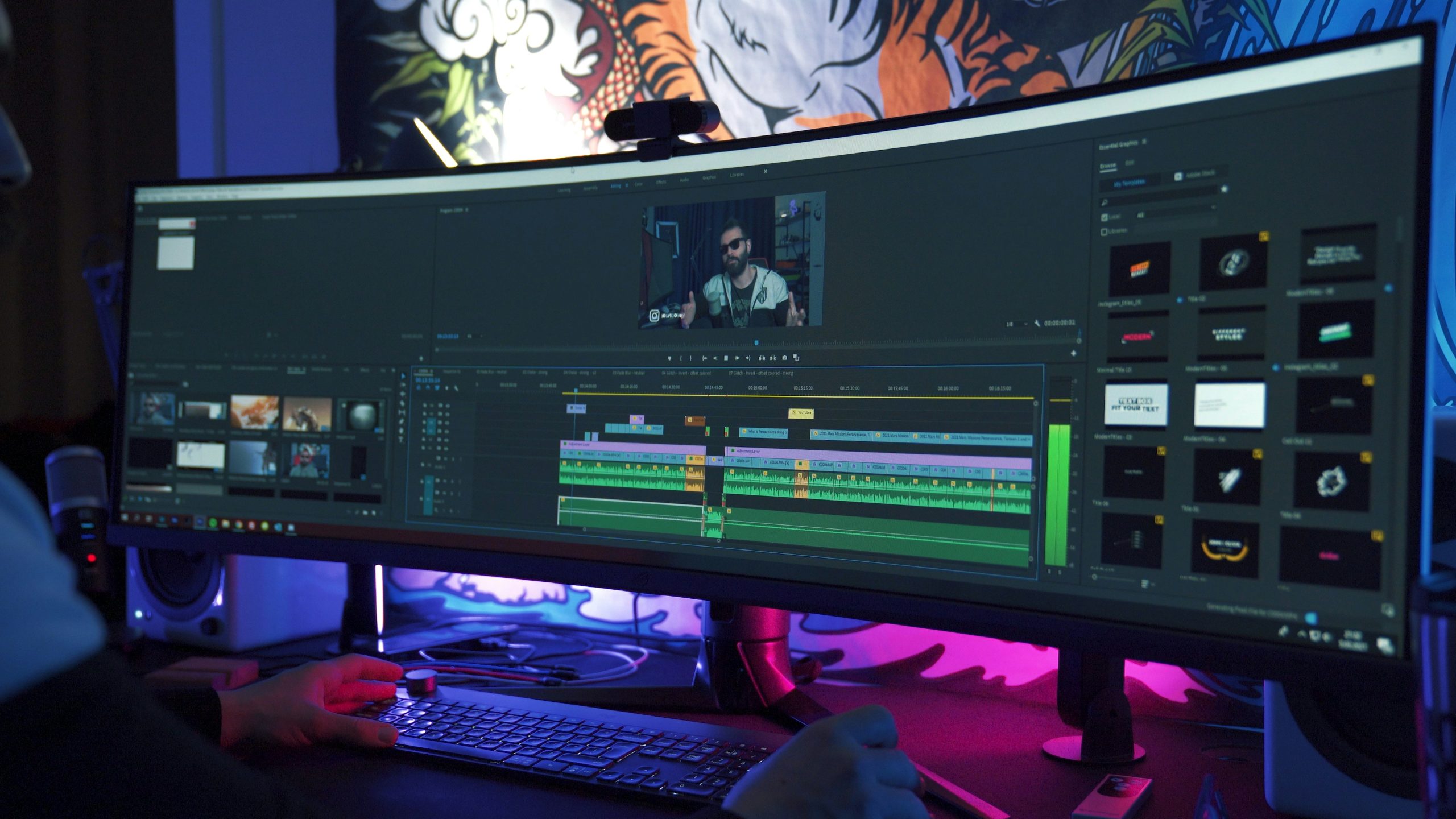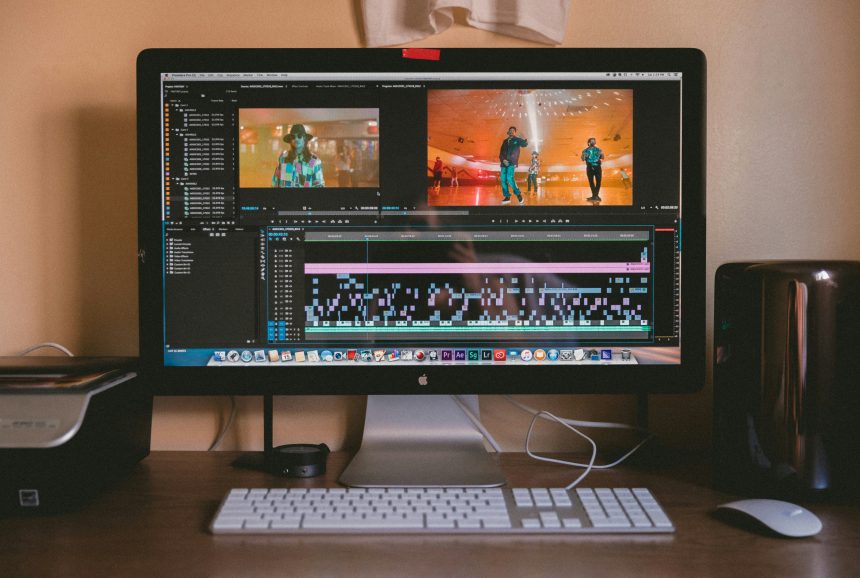In a world where high-definition visuals reign supreme, the quest for impeccable video quality has become an obsession for content creators and consumers alike. Enter artificial intelligence, the technological wizardry that promises to revolutionize the way we experience visual media. Can AI truly enhance video quality to levels previously thought unattainable? Imagine a future where grainy footage becomes crystal clear, shaky camerawork transforms into smooth cinematic shots, and dull colors evolve into vibrant spectacles – all thanks to the magic of AI algorithms. Join us on a journey through the digital realm as we explore how this cutting-edge technology is reshaping the very foundation of video production and consumption. Brace yourself for a mind-bending exploration into the endless possibilities of AI-powered video enhancement!
How AI enhances image resolution
AI technology has revolutionized the way we enhance image resolution, making it possible to transform low-quality images into high-resolution masterpieces. By utilizing sophisticated algorithms and machine learning techniques, AI can predict and fill in missing details in an image, resulting in clearer and more detailed visuals. This process, known as image upscaling, involves analyzing patterns within the image data to generate sharper and more refined images.
One of the key advantages of using AI for enhancing image resolution is its ability to preserve important details while upscaling the overall quality. Traditional methods of upscaling often result in blurry or distorted images, but AI algorithms have shown remarkable success in maintaining clarity and sharpness even when enlarging an image significantly. Additionally, AI-powered image enhancement tools allow users to customize the level of enhancement desired, providing flexibility and control over the final output. Ultimately, AI’s role in enhancing image resolution opens up new possibilities for industries such as entertainment, healthcare, and surveillance by improving visual quality and enabling better decision-making based on enhanced imagery.

AI for noise reduction in videos
AI has revolutionized the video editing landscape, offering innovative solutions to common challenges. One key area where AI shines is in noise reduction in videos. By utilizing advanced algorithms, AI can effectively analyze and suppress unwanted background noises, resulting in a cleaner audio experience for viewers. This technology can significantly enhance the overall video quality by ensuring that the main audio sources are crystal clear and free from distractions.
Furthermore, AI-powered noise reduction not only improves audio quality but also enhances the visual appeal of videos. By reducing background noise, AI algorithms help maintain focus on the main visuals, making for a more engaging viewing experience. This advanced technology offers content creators a powerful tool to elevate their videos to professional standards without the need for costly equipment or extensive post-production editing. As AI continues to evolve and improve, we can expect even greater advancements in noise reduction techniques that will further enhance video quality across various platforms and industries.
Enhancing colors and contrast with AI
One of the most fascinating applications of artificial intelligence in video enhancement is its ability to enhance colors and contrast. By leveraging AI algorithms, video content creators can now effortlessly transform dull and faded visuals into vibrant and eye-catching masterpieces. Through advanced techniques like neural networks and machine learning, AI can analyze each frame of a video to intelligently adjust color balance, saturation, and contrast levels.
The impact of enhancing colors and contrast with AI goes beyond just aesthetics; it can also significantly improve the overall viewing experience for audiences. By restoring lost details in shadows or highlights, AI-powered enhancements can bring out the full potential of a video’s visual elements. This technology opens up new possibilities for filmmakers, content creators, and even casual users to elevate the quality of their videos without requiring extensive editing skills. Ultimately, AI-driven color enhancement is revolutionizing how we perceive visual content by making even ordinary videos appear captivating and professional-grade.

Improving frame rate using AI technology
Imagine watching your favorite movie or playing a high-intensity video game, only to be constantly plagued by lag and choppy frame rates. It can truly be a frustrating experience that detracts from the overall enjoyment of the content. However, with advancements in AI technology, there is a glimmer of hope for improving frame rates and enhancing the viewing experience in unprecedented ways.
AI has the potential to analyze and predict frames within a video sequence, allowing for the generation of intermediate frames that fill in gaps between existing frames. This innovative approach can effectively smooth out motion and enhance frame rates, resulting in a much more fluid and visually appealing viewing experience. By leveraging AI algorithms to intelligently interpolate frames, content creators and developers have the opportunity to deliver smoother videos with higher frame rates while maintaining quality standards. The integration of AI technology holds promise for overcoming traditional constraints on frame rate limitations, opening up new possibilities for optimizing video quality across various platforms and applications.
AI for upscaling low-resolution videos
AI has revolutionized the way we enhance low-resolution videos, offering a solution that was once deemed impossible. Through sophisticated algorithms and deep learning techniques, AI can now upscale these videos to achieve remarkable results in terms of clarity and detail. The ability of AI to analyze and predict missing information in low-resolution videos showcases its potential to significantly improve video quality.
By utilizing neural networks, AI can generate realistic high-resolution frames from low-quality inputs, bridging the gap between inferior video quality and crisp visuals. This transformative technology has implications for various industries, from entertainment to surveillance, by allowing for clearer visual outputs even from initially poor-quality footage. As AI continues to advance in this field, we can expect even more exciting developments that push the boundaries of what is possible in enhancing video quality.

Challenges and limitations of AI in video quality enhancement
AI technology has made remarkable strides in improving video quality, but it is not without its challenges and limitations. One significant challenge is the risk of over-processing videos, leading to unnatural-looking enhancements. The intricate balance between enhancing video quality and maintaining authenticity is a delicate dance that AI must continually navigate.
Another limitation lies in the subjective nature of human perception. While AI algorithms can enhance sharpness, contrast, and color accuracy based on mathematical calculations, they may not always align with individual preferences or artistic intentions. This discrepancy highlights the need for human oversight in ensuring the final output meets the desired aesthetic standards while leveraging AI’s capabilities effectively.
Conclusion: The potential of AI in video enhancement
In conclusion, the potential of AI in video enhancement is truly groundbreaking. With advancements in machine learning algorithms and deep learning models, AI has the ability to significantly improve video quality by enhancing details, reducing noise, and upscaling resolution. The application of AI in video enhancement not only saves time and resources but also opens up new creative possibilities for content creators and filmmakers.
Furthermore, AI can revolutionize how we perceive and interact with visual media by providing more immersive viewing experiences through enhanced clarity and realism. The integration of AI technologies such as neural networks and image recognition algorithms can greatly enhance video content across various industries including entertainment, surveillance, healthcare, and education. As we continue to harness the power of AI in video enhancement, we are on the brink of a technological renaissance that will reshape how we consume and produce visual content.


